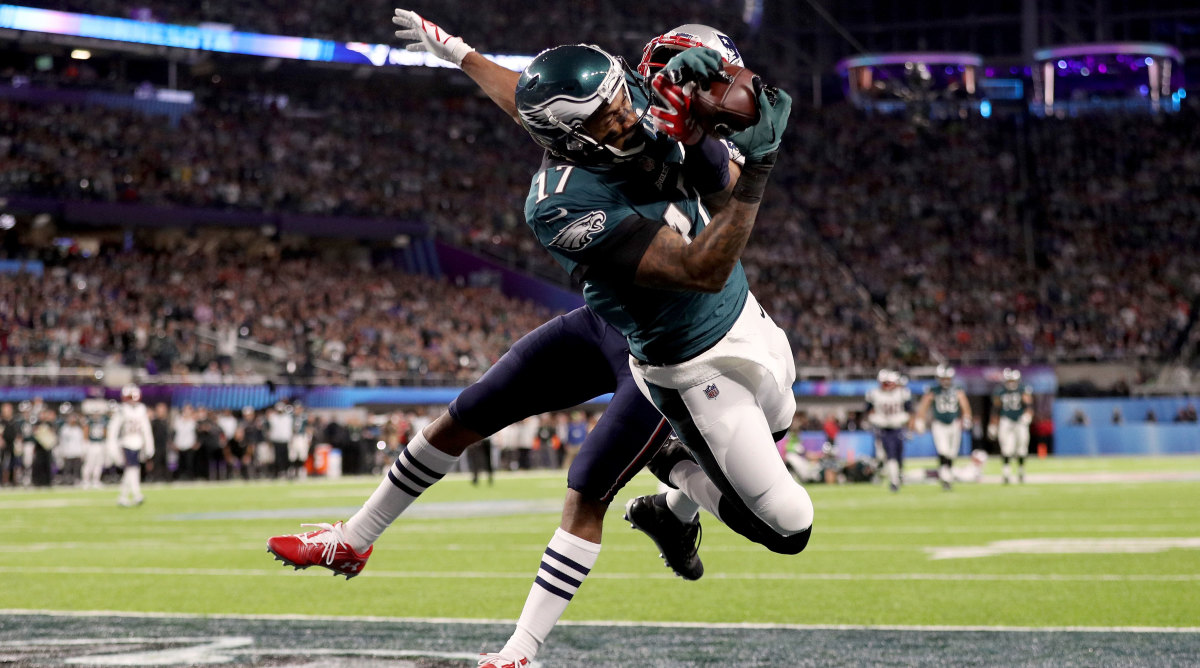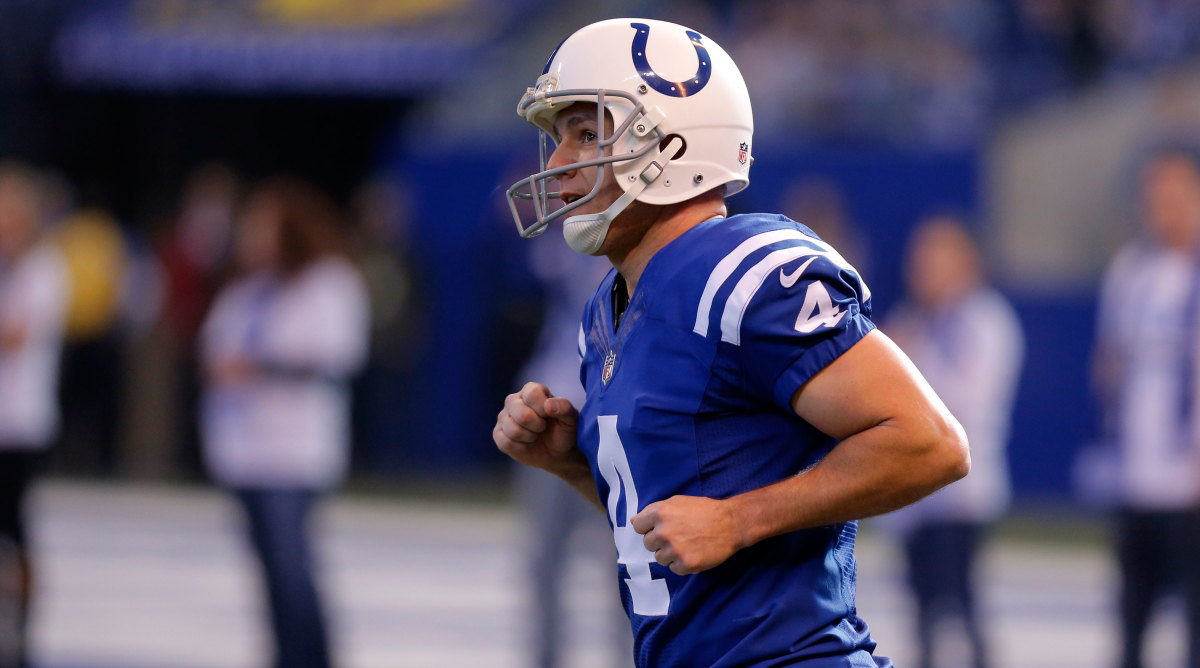From 'The Elway Rule' to 'The Franchise Tag'

Tuesday marked the first day NFL teams could place the franchise tag on their free agents-to-be, and since the Dolphins tagged Jarvis Landry that night, there has been . . . no news. Instead, speculation continues to dominate the discussion around the likes of Le'Veon Bell, Case Keenum, and DeMarcus Lawrence. Seeing as Conor Orr already expertly handicapped nine tag candidates, let's widen the lens, with the help of: a former general manager, the most tagged defensive player of all-time, and a man in the room when the idea was first conceived.
THE ORIGIN STORY
The franchise tag—an anti-free market vestige unique to the NFL—was born in a conference room halfway up the 50-floor General Motors building on the southeast corner of New York City's Central Park. Late in 1992, following months of negotiations over the creation of free agency and the potential installation of a salary cap, Broncos owner Pat Bowlen said (as head lawyer for the players Jim Quinn recalls), "I can't agree to this deal. I have to be able to keep [John] Elway." Days of haggling followed, and out came an agreement. To put it simply: Each team can pick one of its players a year who will be paid top-dollar on a one-year contract while both sides work towards a longer deal. In the NFL offices, the policy came to be called "The Elway Rule." Then it morphed.
THE REALITY
"I never thought it would ever apply to any other player [other than a quarterback]," Quinn says, but it was only a few years before the Ravens tagged a previously undrafted offensive guard (Wally Williams, in 1998). Baltimore more recently tagged kicker Justin Tucker. Teams used the tag to keep not just franchise players, but role players coming off breakout years and aging running backs with an unknown number of carries left in them. The designation, initially viewed as an honor (who doesn't want to be labeled a franchise player) came to be referred to as "the prison tag" by at least one agent. But when the time came to renegotiate in 2011, the NFLPA barely fought for its repeal, because as one union source told Albert Breer, "We knew it'd be fruitless." Teams found the tool too valuable to surrender. Plus, the tag only affected a handful of players each year and, ultimately, a guaranteed top-of-the-line one-year contract is far from a sob story. But don't tell that to Donovin Darius, at least not back in 2005, when the former safety was tagged for a third straight season...
THE PERSONAL SIDE
After a year playing under the tag, "I told my wife, Baby, we're free now!" Darius says. Then the Jaguars tagged him again. It wasn't so much about the money—three years as a franchise player came out to a salary total in the ballpark of what Darius likely would have received on the open market. "Personally, I felt disrespected," Darius says. "I felt like the loyalty was only from one side. I met with the owner and the team's financial guy to say, 'I've given everything I could to this team. All I ask is for you to show me the commitment I've shown you.'" Ten years later, former GM Michael Huyghue was still trying to explain to Darius he only ended up in that position because he was so valuable to the team, using words Darius now shares with players who receive the news this time of year: "Congratulations. You have earned the right to be named the player they can't afford to lose."
Not getting this newsletter in your inbox yet?Join The MMQB’s Morning Huddle.
HOT READS
NOW ON THE MMQB: Albert Breer exposes the farce of free agency's tampering period ... Conor Orr describesMarty Hurney's value to a Panthers franchise up for sale ... Robet Klemko details the South Carolina roots of 'Philly Special' ... and more.
WHAT YOU MAY HAVE MISSED: Klemko spoke to the man who picks the NFL combine participants ... Andy Benoit explained why Kirk Cousins to the Vikings makes the most sense ... Breer published a pre-combine mock draft ... and more.
PRESS COVERAGE

1. Alshon Jeffery will "very likely" miss the preseason after undergoing surgery for a fully torn right rotator cuff that he reportedly suffered in the preseason and played with for the entire year (racking up 1,008 yards and nine touchdowns in the regular season and playoffs combined).
2. The Charlotte Observer reports the Panthers could sell for between $2.3 and $2.8 billion, and it lists several of the potential suitors.
3.Bob LaMonte is the NFL power broker you've never heard of. The 38-year agent currently represents a quarter of the league's head coaches and a quarter of the GMs. He doesn't recruit (coaches come to him), and he credits his success to an education in diplomatic history. Vic Tafur has the whole story for The Athletic.
4. This offseason's biggest mystery might be the Vikings' QB situation, so let's parse every word of new OC John DeFilippo's comment on the matter. "Right now we’re going to get it fixed, I know that,” he said. “It’s just a matter of choosing the right person to fit our culture and what we’re trying to do offensively. There’s no doubt that Rick Spielman, coach [Mike] Zimmer and myself will put our heads together and make the best decision that we think is the best for the Minnesota Vikings. That is the approach we’re going to take, and we’re in the middle of that process right now." DeFilippo also had good things to say about Case Keenum and Sam Bradford. On Bradford: "Sam is probably the purest passer I have ever coached."
5. On NFL.com, Gregg Rosenthal hints at the possibility of an "NFL trade tsunami" this offseason, with teams following the Eagles and Patriots' lead and having the requisite cap space to get creative.

6. Adam Vinatieri is coming back. The 45-year-old(!) enters his 23rd NFL season 58 points shy of the all-time scoring record.
7. For two straight years, the Eagles have led the league in fourth-down attempts. And thanks to solid execution plus a stingy defense, the gutsy calls have consistently paid off. By Jimmy Kempski's math, the team added 74 points on fourth down conversions and gave up just three as a result of failures in 2017.
8. It might be time to give up on ever understanding why Malcolm Butler didn't play in the Super Bowl, or when that decision was made. Patriots defensive tackle Alan Branchsaid he was unaware Butler would be benched until the game started (contrary to safety Devin McCourty's previous claims).
9. Sebastian Janikowski on what Raiders players should expect from Jon Gruden: "Energy,” Janikowski said. “He’s going to yell at you. He’s going to love you. He’s going to hate you. He’s going to be all of the above. That’s what some guys need.”
10. Among the 336 draft prospects expected at the combine, Karl Malone Jr.
Have a story you think we should include in tomorrow’s Press Coverage?Let us know here.
THE KICKER
Matt Hamilton after reaching the first Olympic gold medal game in U.S. curling history: "I’m going to go back to the village and have a McFlurry.”
Question? Comment? Story idea? Let the team know at talkback@themmqb.com
